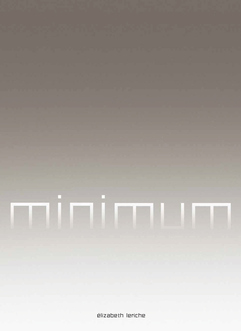Hard Times Drive Design Back to Basics

What can you create for people who have it all, in a morose economic climate? Avant-garde designers showcased in Paris this week are looking to minimalism for an answer, and taking their craft back to basics.
Identify 100 things you really need in life, and lose the clutter: downsizing pioneers in the United States have been doing just that these past few years, driven by a mix of hard times, an urge to live more healthily and slash their environmental footprint.
The mantra was the inspiration behind an exhibit entitled "Minimum" at the Maison et Objet home design mecca outside Paris, which kicked off 10 days of design-linked events taking place citywide until September 16.
"In our hyper-consumerist society, I wanted to explore the idea that you can free yourself from too many things," explained trend-watcher Elizabeth Leriche, who curated the exhibit. "It's about how to makes our lives lighter."
Her visual starting point was a work by the New York-based Israeli designer Ron Gilad: a pencil-drawn line on the wall, which morphs into a thin wire, and finally into the finest of candlesticks, its point inserted into the soft wax.
Gilad's buffets, chairs and coffee tables are made of black-contoured rectangular glass panes, the angles sharp, the esthetic utterly pared down: "These are almost archetypal objects," Leriche told Agence France Presse.
Likewise, the ethereal work of Londoner Maya Selway, whose silver bowls and candelabra look -- deceptively -- like 2D line sketches.
"European designers are coming back to minimalism," said Leriche, often taking their cue from the aesthetic of Asians like Japan's Tokujin Yoshioka, with his invisible armchairs in square-angled clear polycarbonate.
-- "There's been an explosion of creativity" --
Fellow design expert Francois Bernard explored a sister trend towards minimalism inspired by nature in its most essential form -- Earth, Air, Fire, Water -- in an exhibit entitled "Elements".
"There are no animals or floral prints or leaves," Bernard told AFP, "but what you'll find is a lampshade that recreates the effect of light glinting through foliage."
"Nature is represented in a much more emotional, virtual way," he said, pointing at a clear glass vase by the French-Japanese design duo A+A Cooren, with a whirlpool as if frozen in its core.
Bernard sees this nature-inspired take on minimalism as a direct offshoot of the post-2007 economic crisis.
"Like during all periods of upheaval, there's been an explosion of creativity. There's a poetry in the design of these objects that we have never seen before."
"Everyone has felt a pang of wonder watching dappled sunlight falling from a tree, or an eddy swirling in a stream. These objects are like conduits for all those emotions.
"Like a kind of crystal ball that says: look at me, and I'll show you something else," he said of his selection, two thirds European, but also Thai, Japanese and American.
Fire finds its expression in a string of objects -- stools, dishes, lamps -- wrought from copper, a heat-conducting material whose use was until recently restricted to the kitchen or plumbing departments.
Likewise, his "earth" section showcased a series of objects in marble, a material whose image was long tied to the kitsch 1970s coffee table and which is being reclaimed by designers intrigued by its density and mottled surfaces.
For water, Bernard singled out the work of Tina Frey, a Californian designer who fashions resin into irregular-shaped stools, platters, dishes and bowls, with a near-liquid aspect, in cobalt blue or turquoise.
And finally, air is symbolized through cloud motifs, a scrunched paper cloud lamp by Roche Bobois, or high-tech Japanese towels with air injected into their fibers for fluffiness.
Contemplative objects abound, like a mobile by France's Francois Azambourg: two light-as-air blades in black and blond wood, pivoting on fine metal stems, themselves balanced on a smooth pebble.
"In our 21st-century world, we have already produced so many objects, tables, chairs, plates -- designers are left asking themselves what more they can do," Bernard said.
"But these ones may have struck upon a new need -- the need to contemplate."



